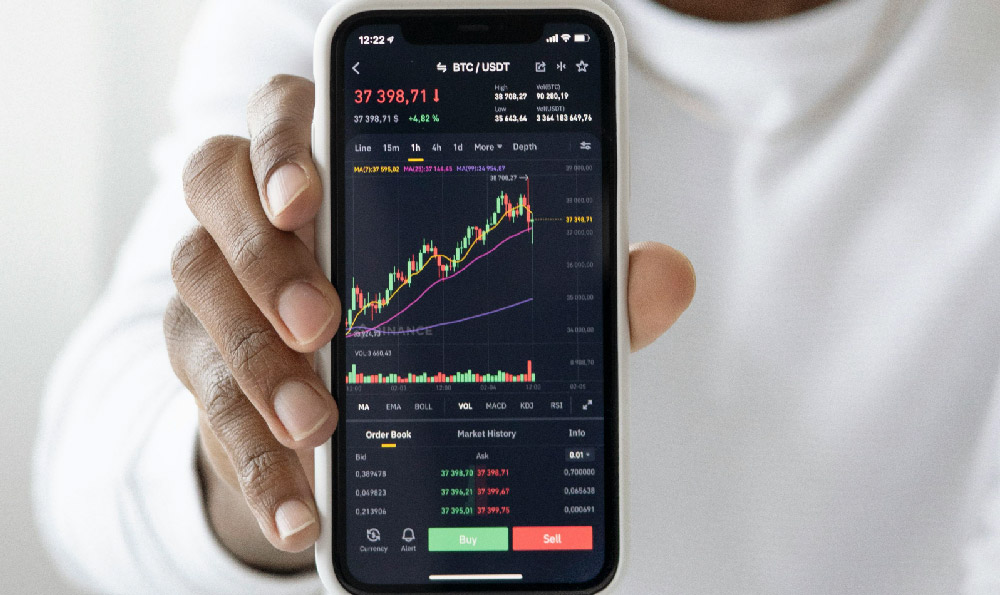Venturing into the realm of cryptocurrency trading can feel like stepping into a dynamic, often volatile, yet potentially rewarding landscape. The allure of substantial returns beckons many, but navigating this digital frontier requires a blend of informed strategy, diligent risk management, and a continuous commitment to learning. Before diving headfirst, understanding the fundamental principles and adopting a prudent approach is paramount.
First and foremost, education is your cornerstone. Don't treat cryptocurrency trading like a gamble; approach it as a sophisticated investment requiring a solid understanding of the underlying technology, market dynamics, and regulatory landscape. Begin by familiarizing yourself with blockchain technology, the bedrock upon which most cryptocurrencies are built. Grasp the concepts of decentralization, cryptography, and consensus mechanisms. This fundamental knowledge will equip you to better assess the potential and limitations of different cryptocurrencies.
Delve into market analysis techniques. Technical analysis involves scrutinizing historical price charts and using various indicators (moving averages, RSI, MACD, Fibonacci retracements, etc.) to identify potential trends and entry/exit points. Fundamental analysis, on the other hand, focuses on evaluating the intrinsic value of a cryptocurrency by examining factors such as its whitepaper, team, use case, partnerships, community engagement, and the overall health of its ecosystem. Combining both technical and fundamental analysis will provide a more holistic view of the market.

Next, choose a suitable cryptocurrency exchange. Research various platforms, comparing their fees, security measures, supported cryptocurrencies, user interface, and customer support. Opt for reputable exchanges with strong security protocols, including two-factor authentication (2FA) and cold storage for the majority of their assets. Familiarize yourself with the exchange's order types (market orders, limit orders, stop-loss orders) and how to execute them effectively. A demo account, if offered, can be invaluable for practicing trading strategies without risking real capital.
Once you've chosen an exchange, you'll need to fund your account. Start with a small, manageable amount of capital that you're comfortable losing. Never invest more than you can afford to lose, as the cryptocurrency market is inherently volatile. Consider diversification as a risk mitigation strategy. Don't put all your eggs in one basket; instead, spread your investments across several different cryptocurrencies. However, avoid spreading yourself too thin, especially when starting out. Focus on a few well-researched cryptocurrencies that align with your investment goals and risk tolerance.
Developing a well-defined trading strategy is crucial. This strategy should outline your investment goals (short-term gains, long-term growth, etc.), risk tolerance, entry and exit rules, position sizing, and stop-loss orders. A stop-loss order is an essential tool for limiting potential losses. It automatically sells your cryptocurrency when it reaches a predetermined price, helping to protect your capital from significant downturns. Your strategy should be based on your market analysis and continuously refined as you gain more experience.
Another important aspect of cryptocurrency trading is risk management. Volatility is inherent in the market, and sudden price swings are common. Avoid emotional trading driven by fear or greed. Stick to your pre-defined trading strategy and avoid chasing quick profits based on hype or speculation. Implement position sizing techniques to control the amount of capital you allocate to each trade. This helps to limit your overall exposure and prevents a single bad trade from wiping out your account.
Staying informed about market news and regulatory developments is critical. The cryptocurrency market is constantly evolving, and new information can significantly impact prices. Follow reputable news sources, industry experts, and regulatory updates to stay abreast of the latest developments. Be wary of scams and fraudulent schemes. Always do your own research before investing in any cryptocurrency, and never trust promises of guaranteed returns.
The "best" approach to cryptocurrency trading is subjective and depends on your individual circumstances, risk tolerance, and investment goals. However, a long-term, value-oriented approach is generally considered to be less risky than short-term, speculative trading. This involves identifying cryptocurrencies with strong fundamentals and holding them for the long term, regardless of short-term price fluctuations. Dollar-cost averaging (DCA) is a popular strategy for long-term investors. It involves investing a fixed amount of money at regular intervals, regardless of the price of the cryptocurrency. This helps to reduce the impact of volatility and can lead to better returns over time.
Active trading, which involves frequently buying and selling cryptocurrencies to capitalize on short-term price movements, is generally more risky and requires more time and expertise. While it offers the potential for higher returns, it also carries a greater risk of losses. If you choose to engage in active trading, it's essential to have a well-defined trading strategy, strict risk management rules, and the discipline to stick to your plan.
Finally, remember that cryptocurrency trading is a continuous learning process. The market is constantly evolving, and new technologies and trends are emerging. Stay curious, keep learning, and be prepared to adapt your strategies as needed. Consider joining online communities, attending webinars, and taking courses to expand your knowledge and connect with other traders. By approaching cryptocurrency trading with a blend of education, discipline, and risk management, you can increase your chances of success and navigate this exciting, yet challenging, landscape. Never forget to consult with a qualified financial advisor before making any investment decisions.












